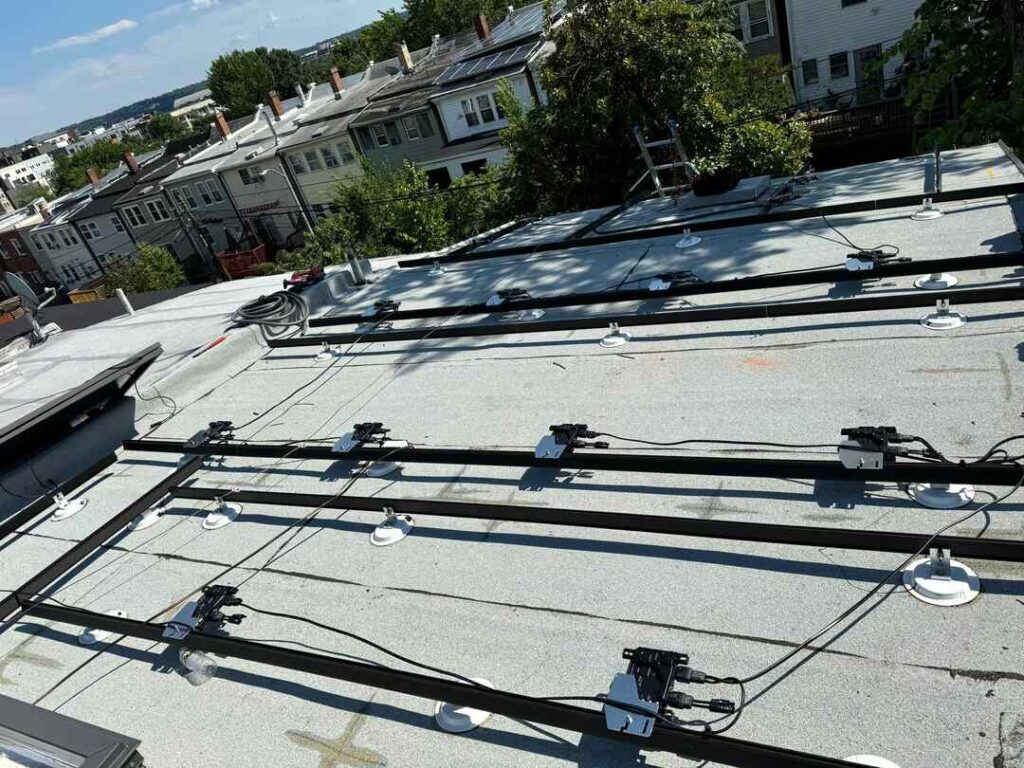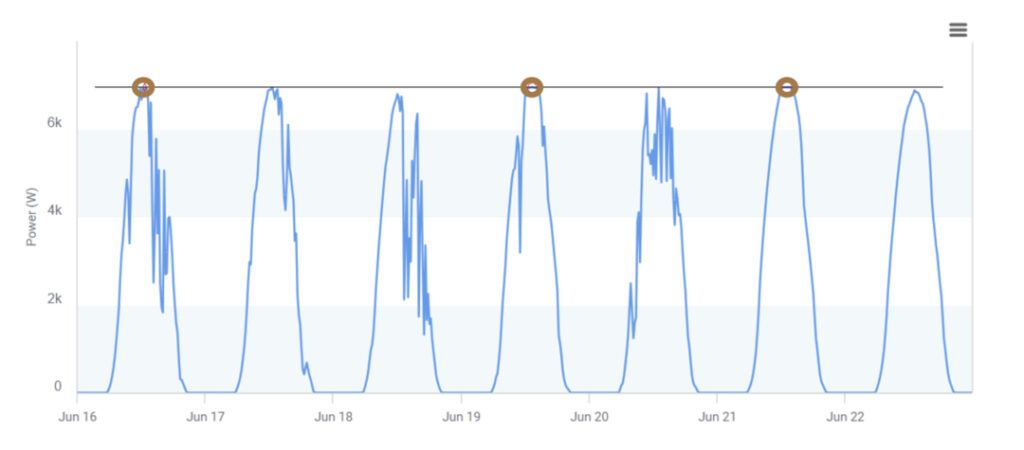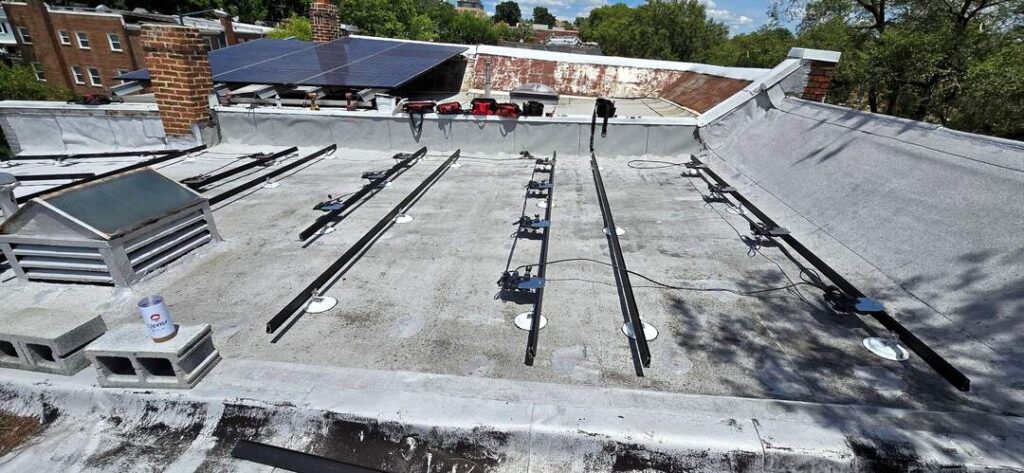
If you’re exploring solar energy, one of your primary concerns might be maximizing power output while ensuring financial prudence. It’s crucial to collaborate with skilled designers and engineers, like the ones here at Uprise, to design an efficient, cost-effective solar system. We’ll optimize your system’s performance — without oversizing, which could lead to unnecessary expenses. Factors we’ll account for include roof space, panel orientation, shading, electrical infrastructure, and — what we’ll focus on in this blog post — solar inverter sizing.
What are solar inverters?
First, let’s define our terms. Solar panels generate direct current (DC) electricity, but your home runs on alternating current (AC) electricity. Inverters convert DC into AC electricity. They’re the vital component of a solar array that allows you to utilize clean energy from the sun. Solar inverters come in various sizes (often rated in watts), and sizing is important. (You can see microinverters attached to the solar racking in the picture above.)
Why not simply install inverters capable of handling the panels’ maximum wattage?
Choosing the right inverter capacity isn’t just about maximizing electricity output at peak times (think the middle of the day on a sunny day). It’s also about ensuring a solid return on investment. While installing inverters that match or exceed the panels’ peak capacity might be tempting, this often results in unnecessary costs. Here’s why: your panels won’t always be generating as much power as they possibly could be. Ideal conditions for maximum solar output — like perfect roof angles and zero shading — are rare.
Consider the graph below, which shows the production of “oversized” solar panels on a south-facing DC roof during one of the sunniest weeks of the year. The black line near the top of the graph represents the total inverter capacity. The brown circles represent moments when power generated by the solar panels exceeds the inverter’s maximum capacity. This is known as inverter clipping.

Clipping means you lose power, since your inverters can’t handle the amount of electricity generated by your solar panels.
Sizing inverters to handle most but not all peak conditions strikes a practical balance between performance and cost-effectiveness. It simply costs less to add another than to install higher-powered inverters. Over time, this solar inverter sizing strategy can result in greater total energy output (even with occasional rare clipping for just a few minutes per year during peak production periods).
To illustrate, check out Aurora Solar’s production graph (under the section “Understanding the inverter DC-to-AC ratio”). Higher wattage panels (green line) occasionally exceed the inverter’s limit, causing clipping, compared to lower wattage panels (blue line) that never reach the inverter’s capacity. Despite the occasional clipping, the overall energy production (depicted by the blue shaded area) with higher wattage panels is greater. This balance ensures maximum energy yield over the system’s lifetime, rather than merely maximizing output at specific times, while remaining cost-effective.

So how do you decide on inverter capacity?
The decision to use inverters with capacities lower than a solar panel’s maximum output revolves around optimizing your return on investment. While again, you may be tempted to install inverters capable of handling the panels’ peak output at all times, this setup will incur higher initial costs. Remember, ideal conditions for maximum production are rare in everyday scenarios, especially if your roof is shaded or isn’t angled optimally for solar (few are). Given our location in Washington, DC, with average cloud cover, varying roof angles, and plenty of trees, it’s unlikely that anyone would consistently push the inverter to its maximum capacity to justify a more expensive inverter.
Designing a system with higher-rated inverters could even necessitate upgrades to your electrical panel and wiring, adding further expenses. These additional costs often outweigh the marginal gains in energy production.
A balanced approach to solar inverter sizing — where inverters are sized to handle most but not all peak conditions — is a more prudent choice for most homeowners, ensuring a cost-effective and efficient solar system.
Want to learn more?
Contact our solar experts at Uprise for a personalized consultation. At Uprise, we specialize in tailoring solutions to fit your specific needs and budget. We can help you navigate the complexities of solar system design, ensuring you achieve maximum energy efficiency and financial savings. Fill our our form online to get in touch or call us at (202) 280-2285.
